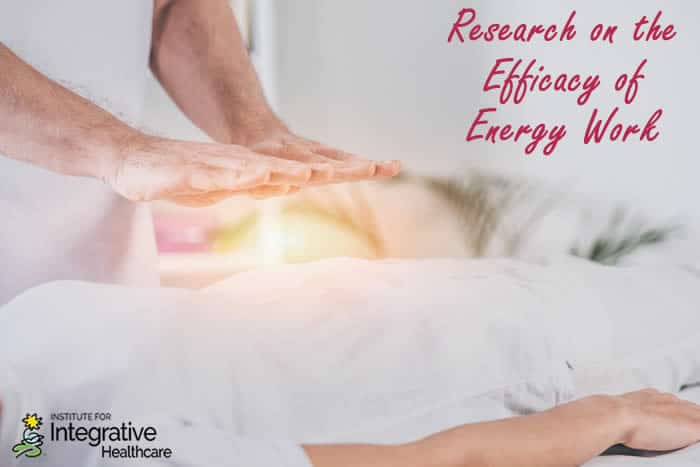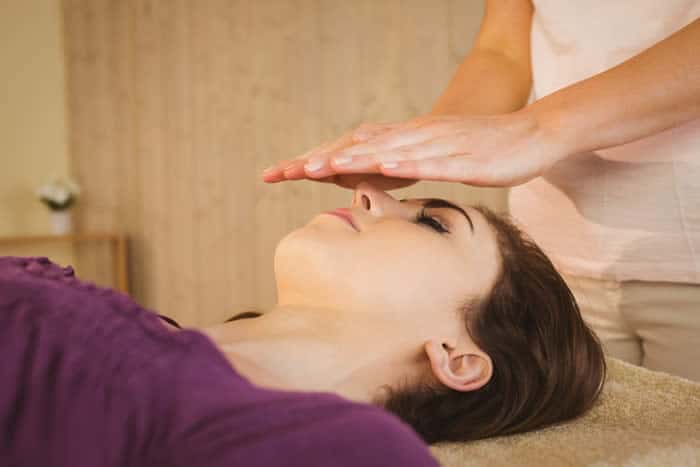

What Is “Energy Work”?
The term “energy work” elicits a wide array of responses and interpretations within the massage and bodywork field. Having taught energy work subjects such as Reiki, Acupressure and Chakra Alignment, I have heard the gambit on opinions of these subjects. I have learned a lot from students from their perspectives of the work shared in class.
This article will dissect the many interpretations, assertions and viewpoints of this term that bewilders some and is fully embraced by others.
Placebo Effect
Many massage therapists discount these subjects as placebo effect in effectiveness. The term “placebo effect” implies the properties of a treatment cannot be attributed to an end result of healing achieved by a patient.
It is fair to acknowledge that some people do experience a placebo effect during healing sessions. Belief in healing may actually create conditions in which healing occurs. This may validate the power of the nervous system in arising therapeutic results during any healing session.
Others place great stock in healing which arises from their uses. There are many anecdotal tales of great and dramatic healing accomplished with the use of energy work, often within a single session. In my professional practice, I have utilized Reiki and other energy work practices with great results witnessed upon my table.
Piezoelectricity
Energy work creates changes in the body’s nervous system and affects electricity (and related forces) within our body. One electrical force within the body affected with energy work with the nervous system is piezoelectricity.
This force is healing property of soft tissue witnessed when direct pressure is applied to tissues. Any energy work application utilizing enough pressure application into connective tissues to affect collagen fibers can induce piezoelectricity. An example of this can be touch stimulation held static upon a tissue. (1)
Energy Work: Research on its Efficacy
Research has emerged in recent years regarding the efficacy of energy work. The Journal of Complimentary Therapy & Clinical Practice published in 2021 a meta-analysis study concluding Reiki, a popular energy work practice, is an effective approach to relieving pain in patients. (2) Improved Visual Analog Scale (VAS) scores were witnessed.

Iris Publishers printed an interesting article in 2020 which surmised the importance of treating energetic imbalances within cancer patients, specifically in terms of Traditional Chinese Medicine’s vantage point of cancer as a condition witnessing heat retention and energy deficiencies. (3)
Gayle Newshan, NP, describes developing a program at Yonkers General Hospital in New York integrating holistic energy healing methods into allopathic treatment plans. Her program creation was highlighted in Complimentary Therapies in Nursing and Midwifery in 2004. Positive results from incorporating energy work techniques included increased patient satisfaction and improved pre- and post- distress scores. (4)
Some massage therapists think energy work is a nice addition to massage sessions with minimal or marginal impact within sessions. These practitioners may note a client seems more relaxed during session. And these same therapists may also comment the big dramatic muscular change achieved did not occur due to the addition of energy work, as if energy work and massage were two separate entities. However, it seems a relaxed body is more capable to initiating healing changes within itself.
Yet others will utilize energy work in a myriad of manners to facilitate a parasympathetic response.
Parasympathetic State
Elementary understanding of physiology shows us how inducing a parasympathetic (relaxed) state initiates healing responses within the body. Parasympathetic nervous responses occur to bring our body into homeostasis after a stressor has induced a sympathetic nervous response.
During the parasympathetic response:
- eyes constrict to normal
- digestion resumes
- blood glucose levels drop
- the liver anabolizes glucose into glycogen
- breathing slows to normal
- and the heart rate slows to normal rate.
With the body back into homeostasis, the body is ready to initiate its own healing in all other manners.
High Electrical Activity
The body contains regions of high electrical activity which produce bioelectric fields. Knowledge of these phenomena accounted for significant discoveries including Augustus Waller’s first recorded measurement of human electrocardiogram (ECG) in 1887 and further refined ECG measuring systems utilized by Willem Einthoven in the early 1900s. (5)
Beyond an elementary understanding of physiology, there are other mechanisms by which one can measure electrical activity within the body which affects our body’s physiology.
Triboelectricity is a mechanism of energy transfer via skin and hair from an external source. An article in Eplasty in 2009 highlighted that skin’s dermal tissue acts as an electrical device allowing current flows through its layers and undamaged skin has resistance up to 300 Ω towards energy transmission. Resistance increases due to scar tissue development in damaged skin. (6)
My Clients Report These Benefits
In my professional massage practice, I often utilize Reiki and similar energy work practices.
I can report benefits achieved from my clients, including:
- reduced pain
- improved sleep
- improved muscle function
- calming of the nervous system
- enhanced well-being
- and reduced frequency and intensity of trauma responses.
The last benefit noted is of great significance as many of my clients are trauma patients. The addition of energy work, either added into massage therapy sessions or stand-alone sessions, augments sessions provided to my trauma patients. Calming the nervous system by inducing parasympathetic response is imperative when working with trauma patients, especially when their bodies are engaged within a sympathetic mode.
No matter one’s opinion, energy work holds a significant place within our field. A strictly Western medicine approach to viewing therapeutic benefits of massage will certainly explain how manual applications can manipulate physical tissues grossly.
However, an awareness that there are forces such as piezoelectricity and triboelectricity allows practitioners to witness the body as more than a system of levers and pullies dictated by muscles and bones; rather, the body contains varying locations of electrical pulses which are affected by touch.












